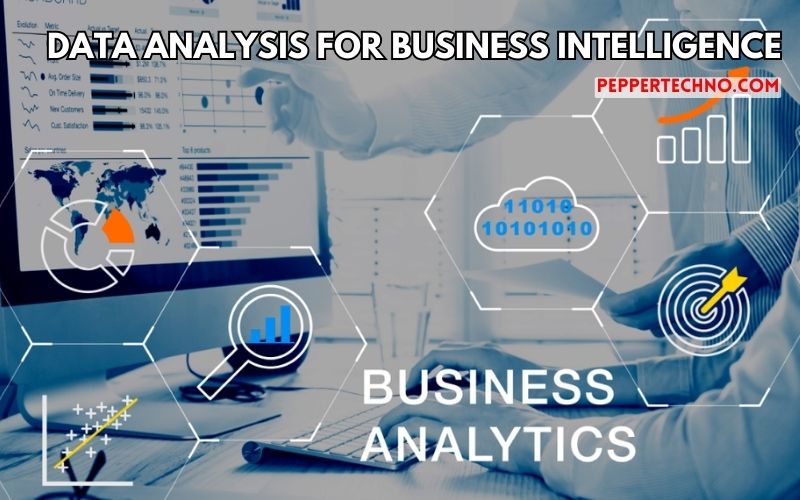Decoding Insights: Data Analysis for Business Intelligence
Welcome to the data-driven world, where insights are the currency of success! In today’s fast-paced business landscape, harnessing the power of strategic data analysis is not just a competitive advantage; it’s a necessity. Businesses that leverage business intelligence through effective data analysis gain a cutting edge in decision-making, customer understanding, and operational efficiency. So, let’s dive into the realm of decoding insights and elevating your Data Analysis for Business Intelligence!

The Importance of Strategic Data Analysis in Business Intelligence
In the realm of business intelligence, strategic data analysis plays a pivotal role in driving informed decision-making. By delving into data insights, companies can uncover trends, patterns, and valuable information that can guide their strategies for growth and success.
Strategic data analysis enables businesses to understand their customers better by identifying preferences, behaviors, and needs. This deep understanding allows organizations to tailor products and services to meet customer demands effectively.
Moreover, leveraging strategic data analysis empowers businesses to optimize operational efficiencies by identifying areas for improvement and streamlining processes. Through accurate data interpretation, companies can enhance productivity and reduce costs.
Embracing strategic data analysis in business intelligence not only enhances competitiveness but also fosters innovation. By harnessing the power of data-driven insights, organizations can stay ahead of the curve in today’s dynamic market landscape.
Types of Data and How to Collect Them
When it comes to data analysis for business intelligence, understanding the types of data available is crucial. There are two main categories: structured and unstructured data. Structured data includes numbers, dates, and categories that fit neatly into databases. Unstructured data, on the other hand, includes text documents, emails, videos – information that doesn’t fit into traditional rows and columns.
Collecting data can be done through various methods such as surveys, interviews, social media monitoring tools or website analytics platforms. Each method serves a different purpose based on the type of insights you’re looking to gather. It’s essential to choose the right approach depending on your specific business needs.
By utilizing a combination of these methods strategically tailored to your goals, you can ensure a robust dataset for analysis. Remember that quality over quantity is key in collecting relevant and valuable information for making informed business decisions moving forward.
Tools for Effective Data Analysis
Businesses looking to elevate their data analysis game have a plethora of tools at their disposal. From robust analytics platforms to user-friendly visualization software, the options are vast and varied.
One popular tool is Tableau, known for its interactive dashboards that make complex data easy to understand at a glance. On the other hand, SAS offers advanced statistical analysis capabilities for businesses requiring in-depth insights.
For those seeking cloud-based solutions, Google Data Studio provides a collaborative environment for real-time data visualization and reporting. Additionally, Python and R programming languages are go-to choices for custom analytics solutions tailored to specific business needs.
No matter the tool chosen, it’s crucial to ensure it aligns with your business goals and data strategy. Experimenting with different tools can help you find the perfect fit for your organization’s unique requirements.
Case Studies: Successful Implementation of Strategic Data Analysis in Businesses
Case studies offer valuable insights into how businesses leverage strategic data analysis. In a recent study, Company XYZ optimized its marketing campaigns by analyzing customer purchase patterns. By identifying trends and preferences, they tailored their messaging effectively, resulting in a significant increase in sales.
Another example is Company ABC, which utilized data analysis to streamline their supply chain processes. By analyzing inventory levels and demand forecasts, they reduced costs and improved delivery times. This led to enhanced customer satisfaction and increased profitability for the company.
Additionally, Company DEF implemented data analysis to enhance employee productivity. Through performance metrics and feedback analysis, they identified areas for improvement and implemented targeted training programs. As a result, employee engagement and efficiency saw notable improvements across the organization.
These case studies demonstrate the tangible benefits of strategic data analysis in driving business growth and operational excellence.
Challenges and Solutions for Implementing Strategic Data Analysis
Implementing strategic data analysis in business comes with its fair share of challenges. One common obstacle is the lack of quality data or incomplete datasets, hindering accurate analysis. Another challenge is the complexity of integrating various data sources and formats, making it difficult to derive meaningful insights seamlessly.
Moreover, businesses often struggle with ensuring data security and compliance while analyzing sensitive information. This poses a risk that must be carefully managed to maintain trust and legality. Additionally, there might be resistance from employees who are not accustomed to utilizing data-driven decision-making processes, requiring a cultural shift within the organization.
To address these challenges, businesses can invest in robust data governance frameworks to ensure data accuracy and compliance. Training programs can also help up skill employees in understanding and leveraging data effectively towards strategic goals. Collaborating with experts in analytics and technology can provide valuable insights on overcoming technical hurdles for successful implementation of strategic data analysis initiatives.
Conclusion: The Future of Business Intelligence and Strategic Data Analysis
As businesses continue to navigate the complex landscape of data-driven decision-making, the future of business intelligence and strategic data analysis shines bright. Embracing innovative tools, leveraging different types of data sources, and overcoming challenges will be essential for organizations aiming to stay ahead in a competitive market.
By harnessing the power of strategic data analysis, companies can unlock valuable insights that drive growth, enhance operational efficiency, and improve overall performance. As technology advances and new trends emerge, staying agile and adaptable will be key in harnessing the full potential of business intelligence.
In this dynamic era where information is abundant and rapidly evolving, those who embrace strategic data analysis as a core pillar of their operations will undoubtedly carve out a path towards sustainable success. The journey towards maximizing business intelligence through effective data analysis is an ongoing endeavor – one that promises great opportunities for those willing to seize them.



